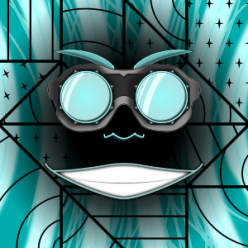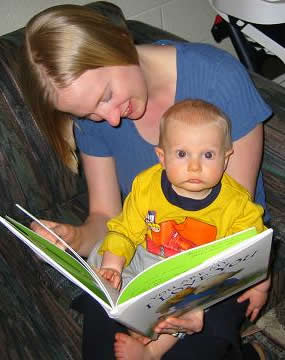Technology is constantly changing the way we do so many things, and writing is no exception. How exactly? I’ve broken down the answer to that question into a set of categories. Keep in mind that all of this is through my own perspective on writing, which has been primarily speculative fiction short stories.
Is there anything I’ve left out, related to any sort of writing? Leave a comment!
1. Revising/writing
a. Spell Check-Many would be lost without spell check. Many programs, including Microsoft Word, even do a spell check as you type, and immediately mark an incorrectly spelled word the moment you type it. The spell check program can suggest alternative spellings, provide dictionary look-up. Still, spell checks could be improved–if the program could recognize a name through context this would prevent a lot of false alarms. Word also comes with a grammar check, but that is less useful because its grasp of grammar rules is shaky at best.
b. Revise and print-You decided you want to add a new paragraph on page one of a five hundred page manuscript? Or you discovered that all of your pages need a 1.5 inch margin instead of 1 inch? No problem! All you need to do is open up the document in your word processor, make your changes, and it’s ready to print. If you wanted to do this with a typewritten manuscript, it would not be fun at all.
2. Backing up your work
Imagine that, after putting weeks, months, or years of work into creating a masterpiece of prose, you suddenly lose your only copy of your manuscript. You remember the major plot points, but you’ve lost all the little details, and all the beautiful sentence-level work. It’s a terrible thought! Well, these days, there’s no reason to lose all your work if you just take a little time to prepare. Email is a convenient way to back your documents up. Many email services provide large storage banks for each account. I have a Gmail account that I started for free that makes a great aid to backing up documents. While I’m working on a new document, I email myself every couple of days. If I ever lost my other copies, all I would need to do is dig up the saved email. In addition to that, if someone plagiarized your work in the future, the timestamp on the email could help prove that you had a work in progress of the story long before it was in print. In addition to email, it’s always a good idea to back up a file in several places, each at different physical locations (so that a disaster like a fire doesn’t destroy years and years of hard work).
There are even programs designed specifically to help you keep your stuff backed up. Anthony recommend Carbonite.
3. Learning the craft
a. Interaction with pro authors-When I was younger, professional writers seemed to be a race of distant and otherworldly beings that I could never hope to interact with, lest my head explode (like when humans hear the voice of God in some belief sets). But now that illusion has been mostly dispelled. Don’t get me wrong, I still admire my favorite writers greatly for the amazing worlds they’re able to pull seemingly out of nowhere, but it turns out that quite a lot of them are quite nice people, and I’m even pretty sure that some of them are at least mostly human. Lots of them have blogs where they freely give writing advice to anyone who’s interested in listening. David Farland, for instance, has an email blog called Kick in the Pants–you can sign up for it at his website. Dean Wesley Smith is another favorite, providing great advice on his blog, including ideas for self-motivation like The Race. I’ve even added quite a few of my favorite authors as friends on Facebook–I enjoy hearing their writing updates and hear when they’re coming through my area for book signings.
No single writing method works for everyone, so if David Farland’s advice doesn’t work for you, don’t be discouraged. Just keep trying different methods until you find something that really clicks. Check out the sites of a few different authors. At the very least, their perspectives are entertaining. And if you have any questions, drop a comment to one of them. Keep in mind that they’re busy, but it’s not at all rare for them to take some time to reply to questions or comments.
b. Peer critique forums-Once I decided to start writing I spent more than a year writing a novel, mostly in isolation. I had just a few people who were willing to give me feedback on my stories, but these people tended to be inclined to tell me that they really liked the story, but not tell me much else. This was good for my ego, but not so useful to improve my writing skills. After that year, I decided to start writing short stories, and while doing market research I came across Baen’s Bar, a peer critique forum that doubled as a submission vehicle for Jim Baen’s Universe. You can post a story to their forum, and it is available immediately for feedback from others registered on the forum. Staff members of JBU often gave their comments, as well as other aspiring writers. Not only can you get feedback on your own work, many of whom are very experienced and have a good eye for picking out what’s missing in a story, but you can critique the writing of others. Of all the ways to improve your own writing, critiquing others is the best way, in my opinion. It allows you examine the stories of other aspiring writers and examine them with a cold eye without any emotional attachment to the story. You can decide what you like and what you don’t, and the real trick is to learn how to apply this to your own writing.
Jim Baen’s Universe will be closed as of mid-2010. There are no official plans to close Baen’s Bar critique forum, and the newsgroup it exists on will probably still need to be maintained for Baen’s Books and the Grantville Gazette magazine, so i hope the venue is around for a good long time.
c. Easy sharing-If you want to share a copy of a story with a friend, all you have to do is drop them an email. It’s free, and it’s quick, and a great way to share your work for feedback or just for fun.
d. Autocrit-Autocrit is a subscription-based service which provides automated tools to help watch for trouble spots in your manuscripts. It can look for potential flaws such as overused words and phrases, cliches, and overused dialogue tags. No tool is the end-all be-all of revising your manuscript, but this tool in combination with other techniques and tools can make a big difference.
4. Research
The effect of the Internet on research is obvious. Anyone with Internet access has nearly endless banks of information at their disposal, but one must always keep the source in mind. Wikipedia, for instance, is good for finding quick, interesting information, but because it is created by users, information provided there may not be correct. If a writer decides to write a story about doppelgangers, a quick Google search can provide a plethora of information in a fraction of a second.
5. Market info
1. Sites like Ralan provide submission information for a wide variety of publications.Â
2. Most markets have submisions page which describes exactly what they’re looking for, including any special formatting they require, required length, and preferred themes. Be sure to check out this page each time you send out a story to that market. You never know when some of their requirements will change. Many markets close to submissions from time to time, also, and it’s best to check here to be sure the market is still open as well.
6. Electronic submission/staff interaction
a. Save money-It costs nothing to send an email. That’s a major perk! Mailed submissions usually cost something like 2 dollars domestic within the US, including the SASE, and that’s not including the envelopes or the printing costs. Email submissions cost nothing. When you’re just getting started, those postage costs add up fast!
b. Quick interaction-An electronic submission arrives nearly instantly, ready for perusal by the magazine’s staff. My record fastest response was only 47 minutes (from Fantasy Magazine). That one was an outlier, but a few magazines consistently respond within 24 hours such as Fantasy, Clarkesworld, and Podcastle.
c. Geographically separated staff-A magazine’s staff members no longer have to be located anywhere near each other. In many cases, staff members may have never met in person, but members can interact easily with technology like email and online forums. This makes it much easier to find staff members, if you have the entire net-connected world to filter for candidates.
d. Competition fiercer every day! A downside to the recent ease of submission is that when submissions are both free and easy, more and more people will try it, which means more competition!
7. New publishing mediums
Printed words (either in magazine or book form) are no longer the only way to publish fiction. In fact, print may be the hardest one to maintain profitability with, and is probably the hardest method to start a new magazine with. Even a few years ago, print publications were generally considered to be more prestigious, but minds are opening a little bit more every year. SFWA recognizes professional markets based on pay and the circulation level, regardless of the medium.
Both of my sales to date have been to non-traditional publishing formats.
a. HTML-text format on a website. This can be provided for free (like Fantasy Magazine or Strange Horizons) or on a fee-based system (like Intergalactic Medicine Show or Jim Baen’s Universe).
b. Podcast-I’ve recently discovered audio fiction and I honestly don’t know how I’ve done without it. I can load up many stories on my iPod and I listen to them every day on my commute. Now I look forward to driving to see what the next story is! My first fiction sale was to Pseudopod, so I’ve got a soft spot in my heart for podcasts. And, even better, audio rights and text rights often do not overlap, so there is a large potential for resales for audio markets, as they are providing a substantially different product.
c. Print on Demand-Even just a few years ago, POD wasn’t really a viable option. Nowadays, if you have a good idea for a book or an anthology, you can publish it through POD and if you can find the audience for it, you can really do well. POD is not as risky as doing a huge preprinted print run (the traditional method), because you only print copies of the book that you have already sold. This means that once you’ve covered your artist/design and other upfront costs, each sale holds a share of profit. This is particularly appealing if the level of interest is uncertain or expected to be low.
Northern Frights Press was the publisher for my second sale. This was NFP’s very first anthology, provided via POD. Despite it being POD the printing is of a high quality that you could find in any bookstore, and it’s available to order from Amazon just like any other book. I’ve been very impressed with POD so far.
d. E-books-E-readers like Kindle are just starting to gain more widespread popularity. For a small fee, you can download books right onto the e-reader. With this technology you can grab new books instantly for less than what you would pay at the store, and you can carry your whole library with you wherever you go. I’m not sure that they will ever replace real books entirely–there’s just something I love about holding a physical book in my hand, the smell of the pages, the feel of the binding–but there are a lot of advantages to e-readers.
8. Social networking
In decades past, writing was generally considered to be a pretty lonely profession. Long hours alone with your typewriter were the norm, making a writer feel isolated from the very world she’s trying to write about. But if you’re writing on a net-connected laptop, you no longer need to be isolated. The importance of social connections in writing cannot be understated. There are many forums focused solely on writing, some geared towards particular genres, and they’re a great place to meet fellow aspiring writers. You’re not the only one struggling to be published. Together you can celebrate your successes, console each other for your failures, swap critiques, discuss writing techniques, and maybe just unwind a little bit.
#8 is closely related to #9 and #10. Read on!
9. Self-promotion
This overlaps somewhat with social networking in methods and tools, but the intent is different. Rather than meeting people for the sake of meeting people, this is working to spread your work to as many people as possible. Site like Facebook, Twitter, and Reddit work as very powerful promotional tools. With each of these you can share links with huge amounts of people with minimal effort, and they’re all free. Most of the hits for this article were probably generated by these tools. With a little careful promotional work, like book giveaways, traffic can be driven to your site to advertise your writing and help with name recognition.
10. Availability of distractions
The flip side of the coin of all these advantages is that with the whole web at your fingertips, distractions are easy to find. If you’re stuck on a story, staring at the word processing screen, it is far too easy to pop up Facebook to go read your friends’ statuses, to hop on an online forum to discuss True Blood vs. Twilight, or to go read (or write) a blog post about writing. Those things all have their time and place, but if you want to write, make sure you get your writing time in too!

 Nancy Fulda is a mom, writer, assistant editor of Jim Baen’s Universe, and the creator of Anthology Builder. Anthology Builder is an innovative website that allows customers to choose a set of short stories that are then printed and bound into a printed anthology just for them.
Nancy Fulda is a mom, writer, assistant editor of Jim Baen’s Universe, and the creator of Anthology Builder. Anthology Builder is an innovative website that allows customers to choose a set of short stories that are then printed and bound into a printed anthology just for them. Written by Melissa Shaw
Written by Melissa Shaw Melissa Shaw’s short fiction has appeared in
Melissa Shaw’s short fiction has appeared in 
 I’m happy to announce that my 2nd piece of published fiction has now been set loose on the unsuspecting public. The story is titled
I’m happy to announce that my 2nd piece of published fiction has now been set loose on the unsuspecting public. The story is titled